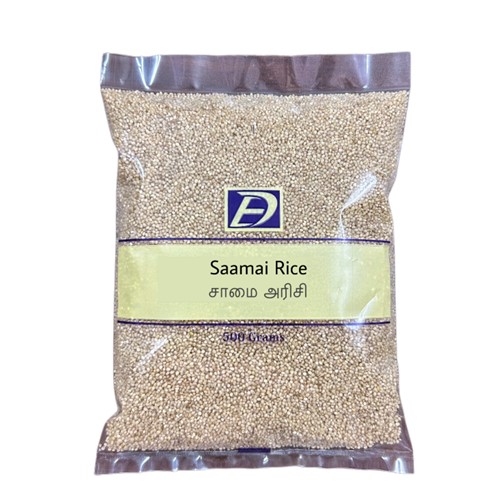
சாமை அரிசி - Little Millet
Weight : 500 gr
Saamai rice, also known as little millet, is a highly nutritious grain that has many benefits:
1. Nutrient-rich: Saamai rice is packed with essential nutrients like B vitamins, minerals such as calcium, iron, potassium, zinc, and magnesium, as well as antioxidants. These nutrients are essential for maintaining overall health and well-being.
2. Gluten-free: Saamai rice is gluten-free, making it an excellent choice for individuals with celiac disease or gluten sensitivity. It can be used as a substitute for wheat or barley in various recipes, including bread, porridge, and baked goods.
3. Weight management: Saamai rice is a good source of dietary fiber, which can aid in digestion and help promote a feeling of fullness, aiding in weight management. The fiber content also helps regulate blood sugar levels, making it a suitable option for people with diabetes.
4. Heart health: The presence of magnesium in saamai rice is beneficial for heart health as it helps lower blood pressure levels and reduce the risk of heart disease. Additionally, the fiber content can help lower cholesterol levels, reducing the risk of cardiovascular issues.
5. Diabetic-friendly: Saamai rice has a low glycemic index, which means it does not cause a sudden spike in blood sugar levels after consumption. This makes it a suitable choice for individuals with diabetes or those looking to manage their blood sugar levels.
6. Digestive health: The dietary fiber in saamai rice supports healthy digestion and can help prevent conditions such as constipation and other digestive issues. It also promotes the growth of beneficial gut bacteria, which is important for overall gut health.
7. Energy booster: Saamai rice is a good source of complex carbohydrates, which are the primary source of energy for the body. It provides sustained energy levels without causing a rapid increase in blood sugar, making it an excellent choice for athletes and anyone with an active lifestyle.
8. Versatility: Saamai rice can be used in a variety of dishes, including pilaf, salads, porridge, and even desserts. Its nutty flavor and slightly chewy texture make it a delicious and versatile ingredient in cooking.
9. Environmentally friendly: Cultivating saamai rice requires less water and fewer resources compared to other grains, making it an environmentally friendly choice. It is also relatively resistant to pests and can be grown with minimal pesticide use.
10. Cultural heritage: Saamai rice has been a staple in traditional South Indian cuisine for centuries and is valued for its cultural significance and role in regional culinary traditions. Incorporating saamai rice into modern diets helps preserve these culinary traditions and promotes food diversity.